Use Patient Preference to Improve Patient Care Through Technology
Stop me if you’ve heard this one: It is absolutely imperative for medical practices who depend on Medicare reimbursements to strive to improve patient experiences through whatever means necessary if they hope to succeed in the world of value-based care.
The healthcare tech world clearly recognizes this imperative, as evidenced by the emerging technologies that are being geared specifically towards facilitating better patient experiences.
But not all small or independent practices can afford to invest in these emerging technologies, making it more important to prioritize according to what their patients want most.
To that end, we’ve surveyed 1,000 U.S. patients about their opinions, preferences, and expectations around three major healthcare technologies: artificial intelligence (AI), telemedicine, and EHRs.
Here is what we found:
Patients think telemedicine is the MVP
Patients don’t know that much about AI in healthcare—but they know they want it
Patients are officially unimpressed by paper medical records
Patients think telemedicine is the MVP
We’ve covered patient sentiment around telemedicine services before, but the results of past surveys made it clear that these questions were worth putting to a larger group of respondents.
We found that the trends we identified with smaller groups hold true for a larger population as well. Most notably, a significant majority of patients are more likely to choose a medical provider who offers telemedicine over one who does not.
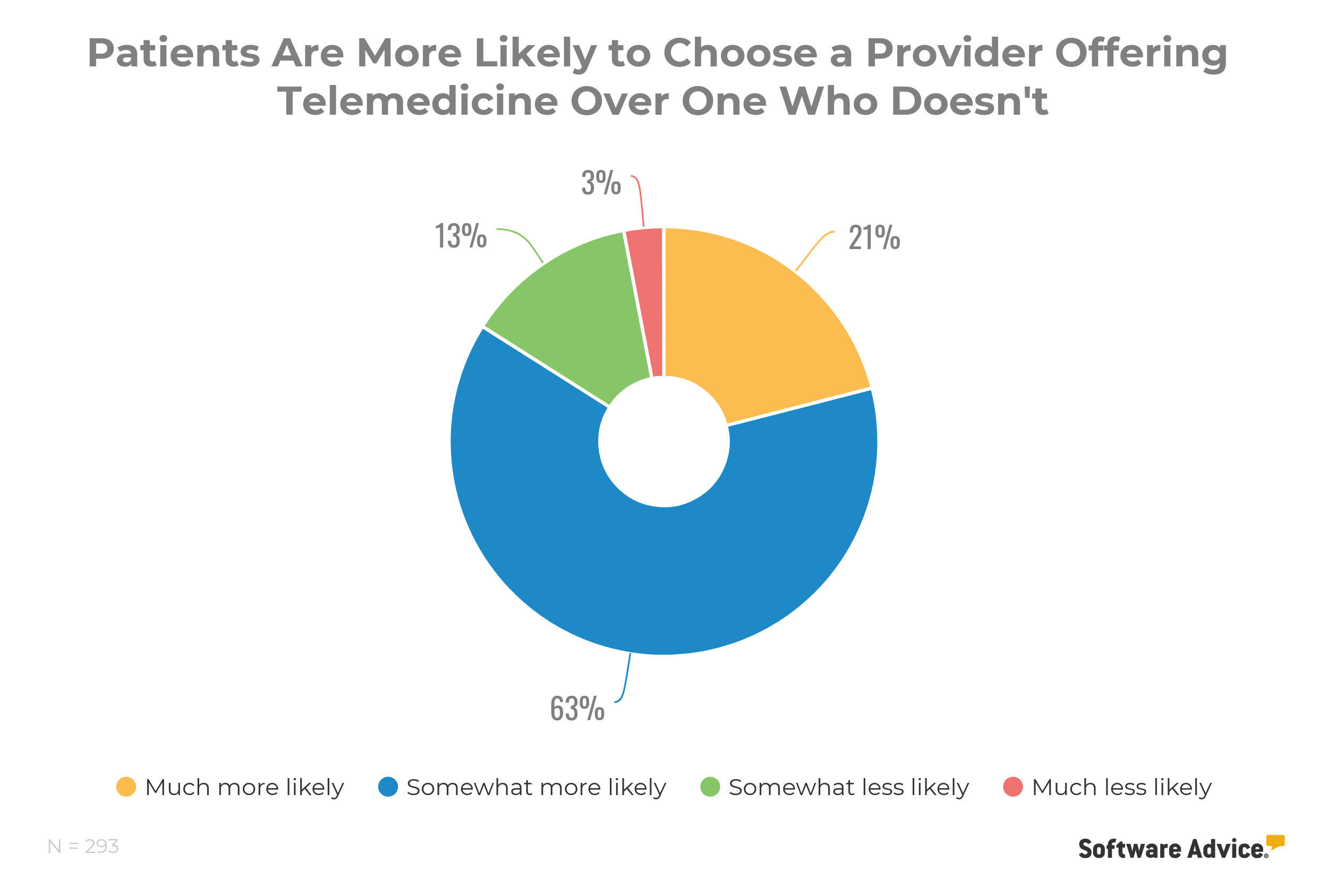
This is far and away the most compelling evidence in support of telemedicine for practices of any size. If your goal is to attract more patients to you, this proves investing in some telemedicine services (and marketing those tools) is a great way to do that.
If investing in a robust telemedical tool with imaging and lab integrations is still out of your budget, that’s okay. Plenty of patients said they would prefer telemedical appointments for basic illnesses (e.g., colds), and that kind of functionality is available in more basic (and affordable) telemedicine tools.
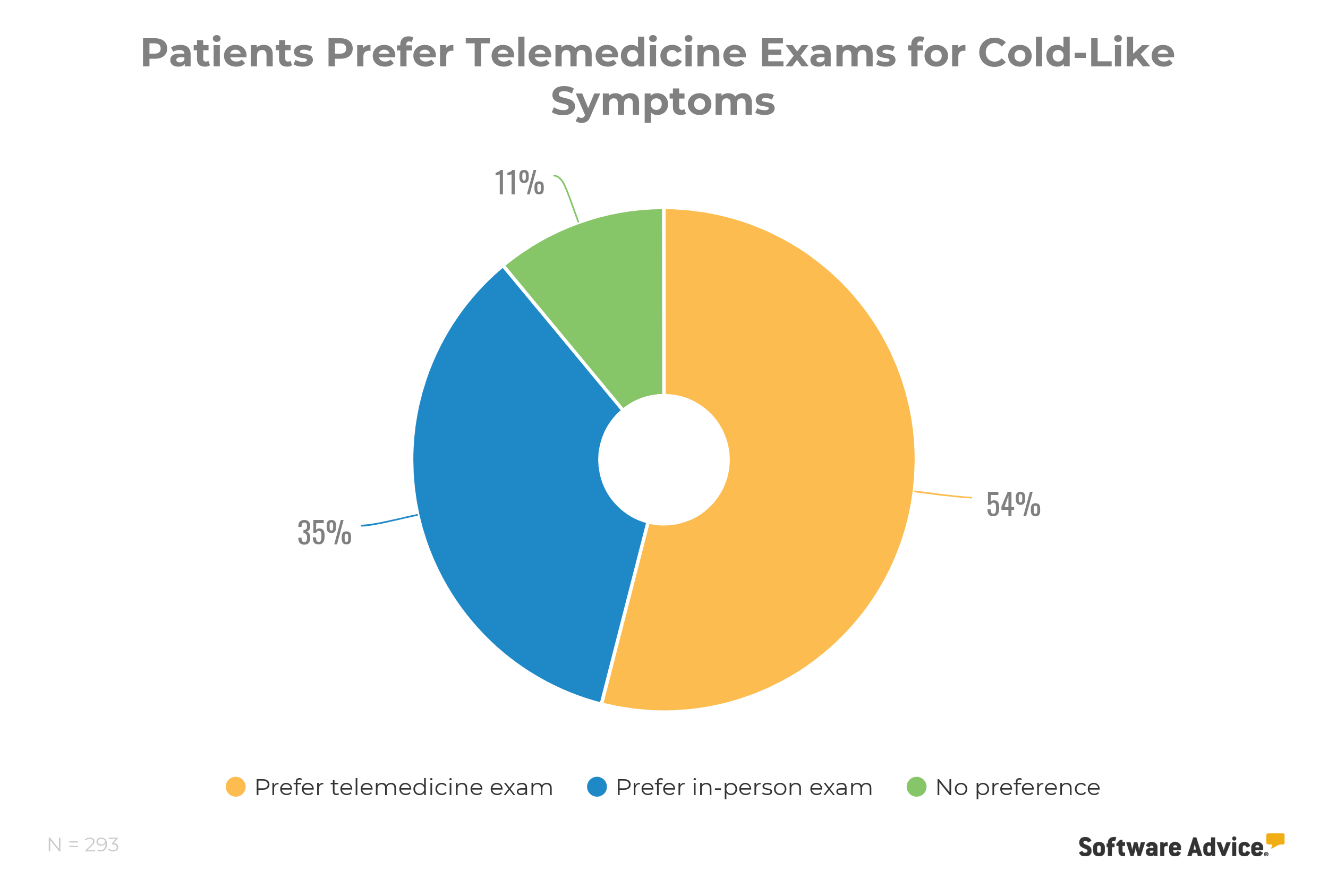
Here’s another interesting trend for telemedicine: In 2017, when we asked 400 patients whether or not their health insurance covered telemedicine, 72% had no idea. In 2019, when we asked the same number of patients the same question, that number went down to 63%.
In 2020, when we asked nearly 1,000 patients, we found that only 13% didn’t know.
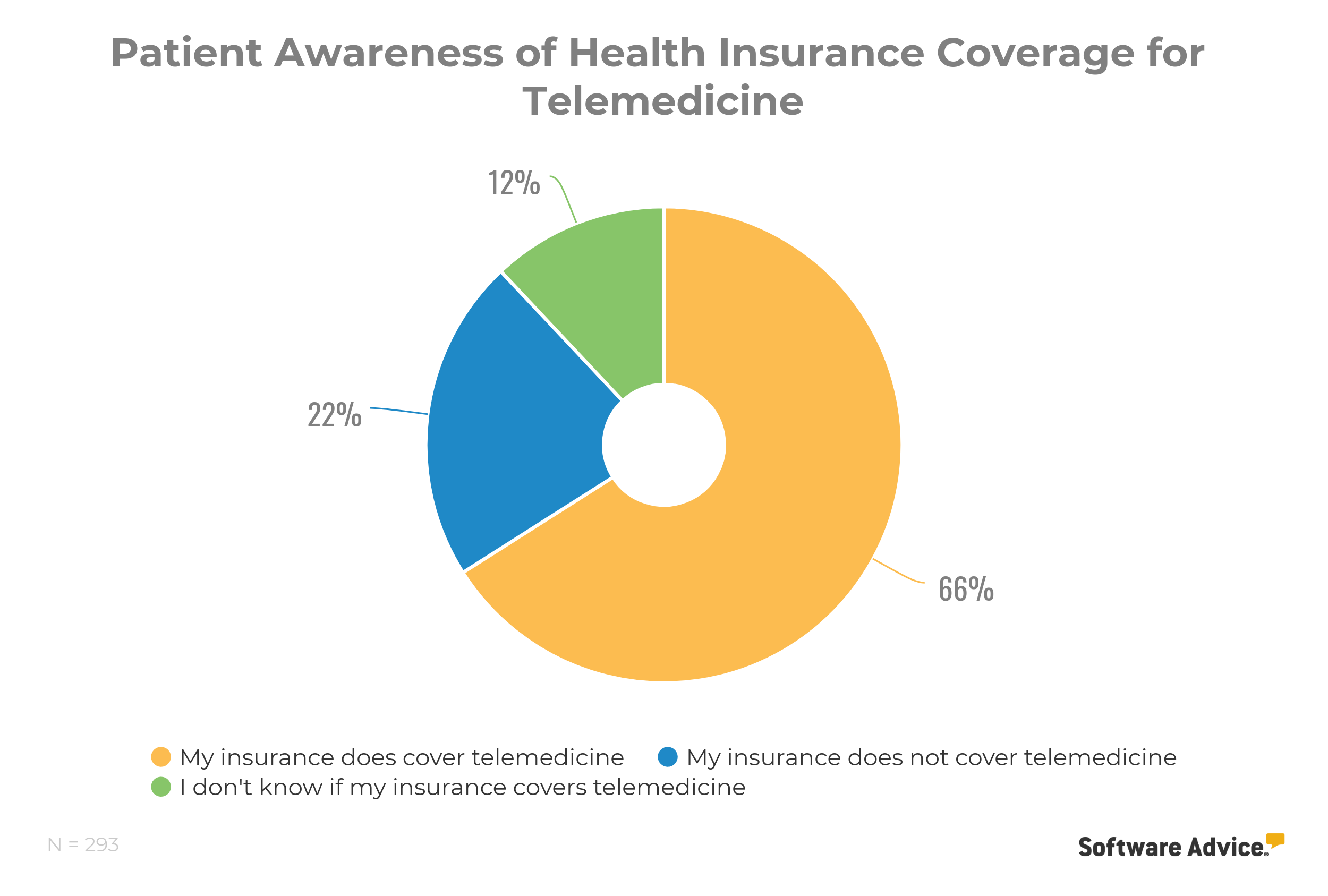
This tells us that patient interest in telemedicine is steadily (and exponentially) growing. Either significantly more patients are seeking out information from their health insurance providers around telemedicine or health insurance providers are doing a lot more work to educate patients on their options. Regardless, the key takeaway is that patients know more about telemedicine, and they’re liking what they’re learning.
The bottom line: In 2017, we predicted that software vendors hoping to increase telehealth adoption rates in the U.S. would only be able to do so if they worked with insurance providers to educate patients on their options. Clearly, that’s happening.
And based on patient likelihood of opting for practices with telemedicine services over ones without, the message is very clear: Telemedicine is a top choice technology for improving the patient experience.
Patients don’t know that much about AI in healthcare—but they know they want it
OK, artificial intelligence; here we go.
You’ve heard the buzzwords—you know about machine learning, decision support, and chatbots as well as all the other cool things being done with AI in the healthcare world right now. But do your patients? Not really.
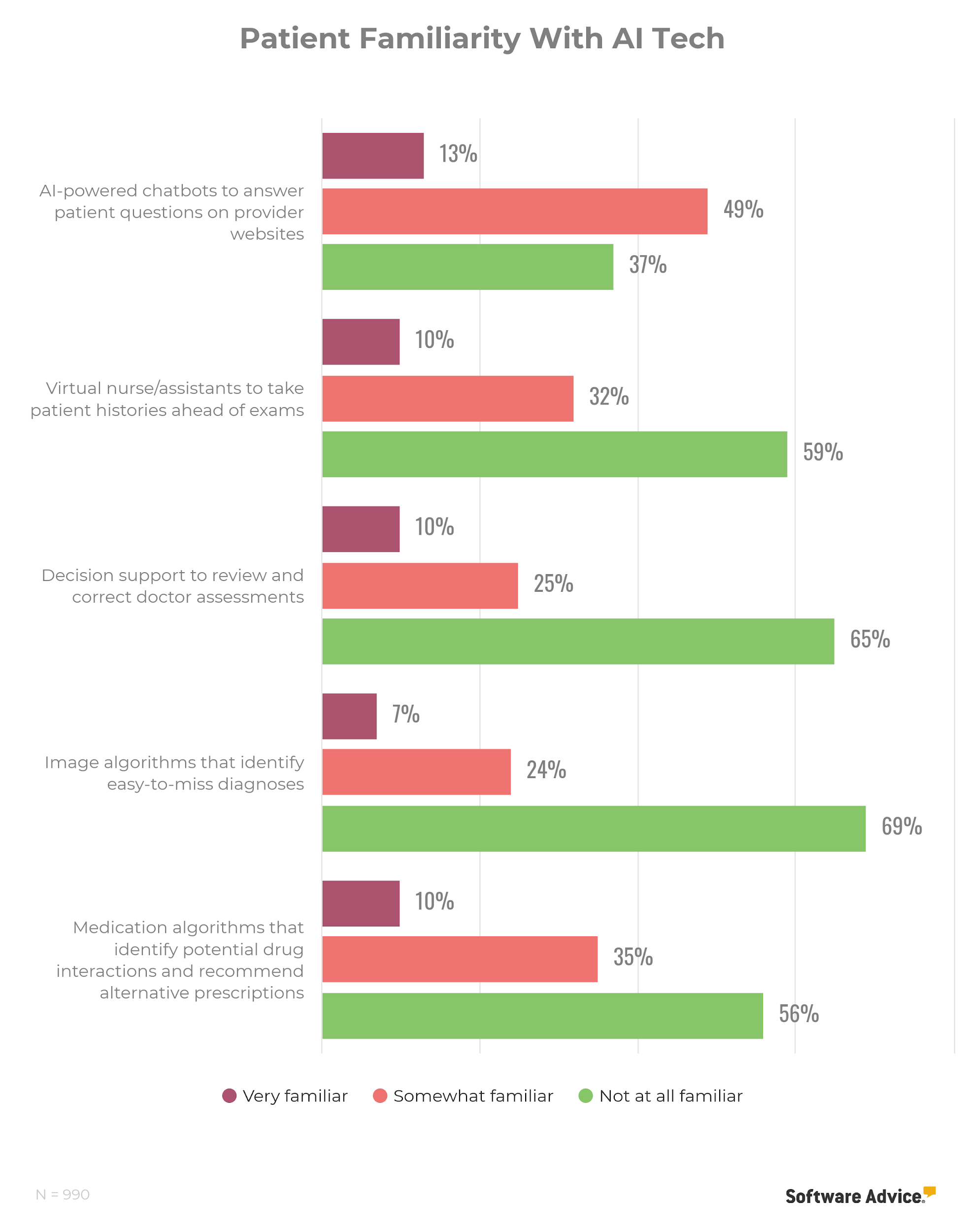
It’s not surprising that most respondents were not at all familiar with the specific AI applications we asked about in our survey, but the number of those who were somewhat familiar was a bit unexpected.
Patient familiarity makes the most sense when asking about patient-facing AI technologies, such as chatbots. Over a quarter of patients said they have actually personally interacted with chatbots at some point.
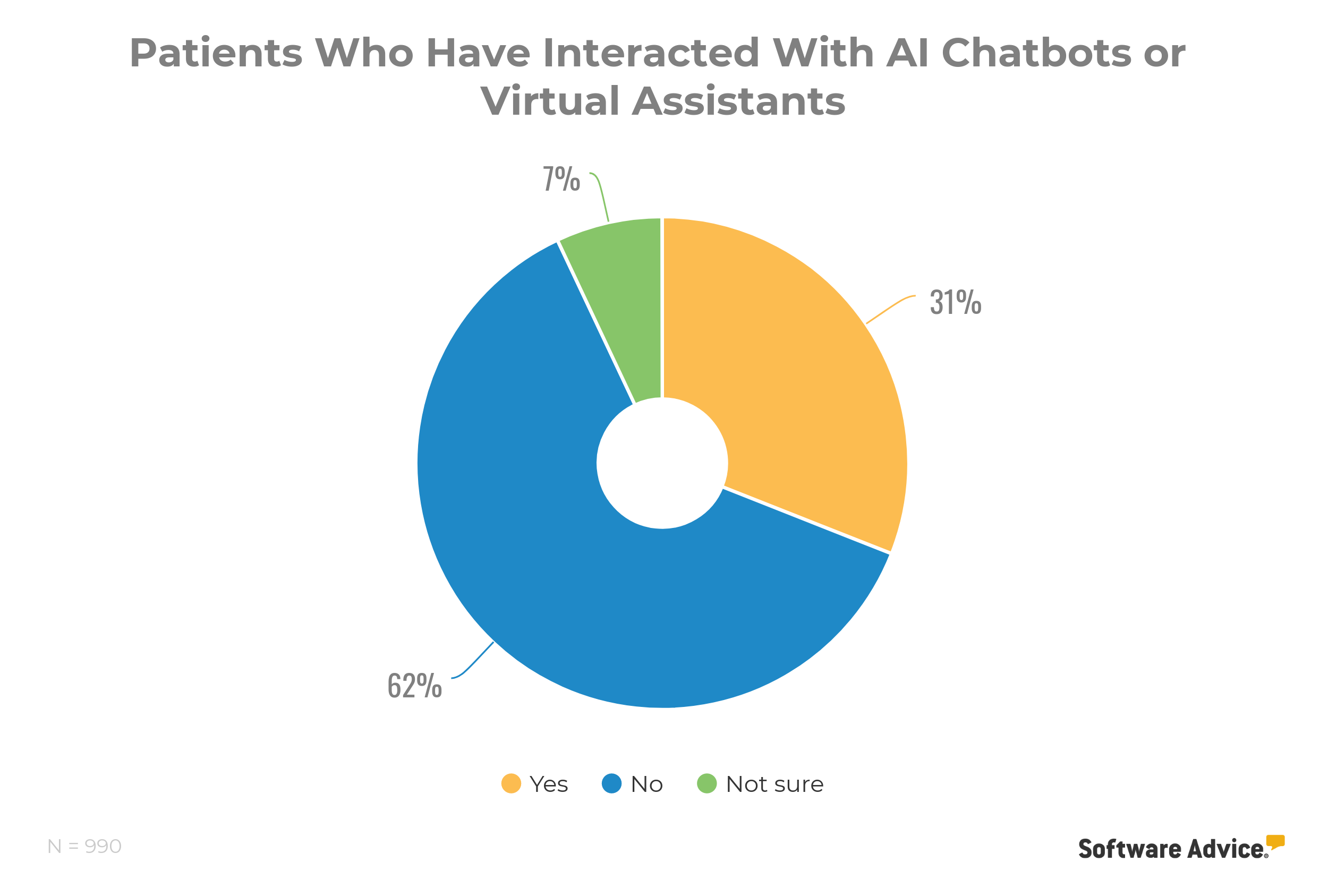
So it stands to reason that most patients who haven’t gone through medical school and who don’t make their living treating sick people would be unfamiliar with specific AI applications for healthcare, which makes it a tricky thing to gauge.
As a medical provider, a better question to ask is how do patients feel about AI being used in healthcare, in a general sense? The answer is… really good.
Well over half of patients said they trust artificial intelligence being used in various healthcare applications.
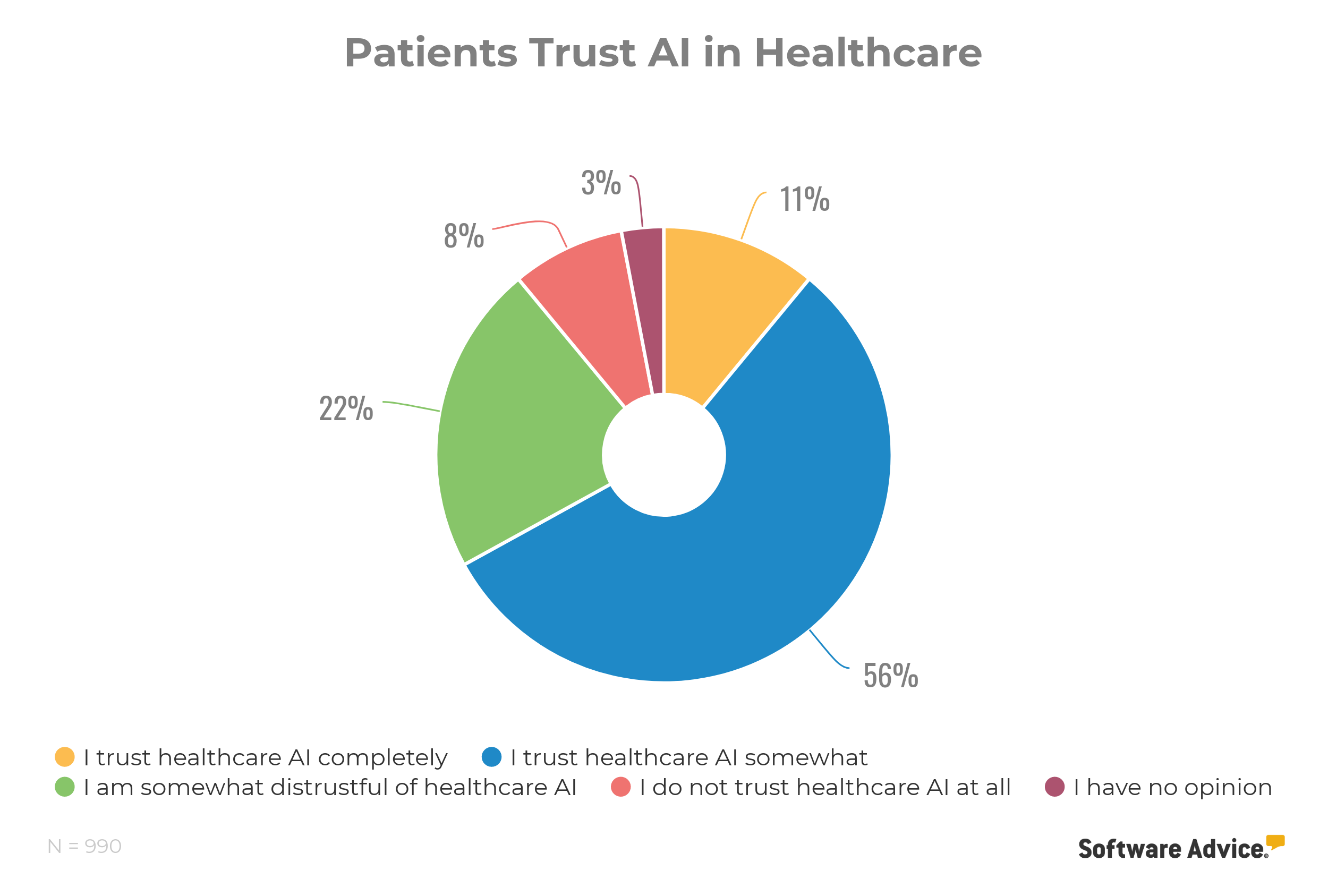
And 65% of patients believe the adoption of AI in healthcare is beneficial to the patient experience.
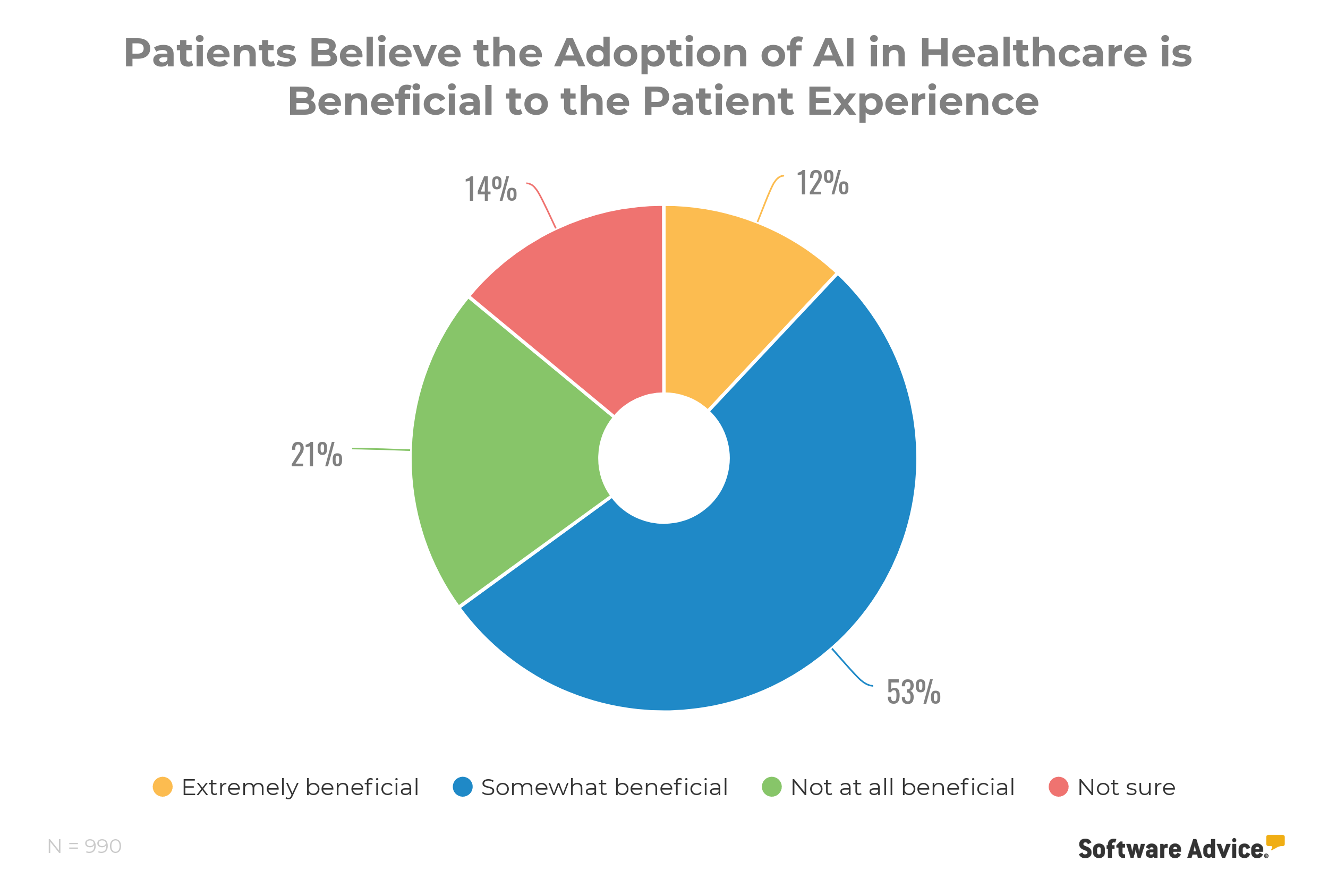
64% of patients said they would be more likely to choose a medical provider who uses AI-powered tools in their practice over one who doesn’t.
At first glance, this news might be daunting for small practices that haven’t yet adopted AI tools. I get it, AI can be intimidating; there’s an idea that it’s something only big hospital systems can afford, not independent family practices. But that’s not entirely true. There are plenty of electronic health record (EHR) systems out there that have AI-powered functionality.
An EHR with AI decision support is a great place to start testing the waters for AI tech. It’s something you likely already use in your practice on a daily basis. Running your notes through an intelligent decision support system within the EHR is one extra step that’s going to make your diagnoses more accurate and reduce the possibility of mistakes.
From there, you can grow into using even more AI tools like intelligent chatbots on your website to field patient questions, which will have the added benefit of being visible to everyone who visits your site and will peak interest in your cutting edge practice.
The bottom line: Sure, patients don’t know exactly what machine learning is or how exactly it’s being used to improve healthcare for everyone, but they do know that artificial intelligence is a remarkable new tool that’s going to revolutionize the way patient care is delivered. They aren’t afraid of it—quite the opposite, they’re eager for it.
Patients are officially unimpressed by paper medical records
We’ve talked a lot about the value of electronic medical records over old school paper record systems. We’ve compared the two systems directly, we’ve enumerated the disadvantages of using paper records as well as the advantages of EHRs, and now we’ve added the patient perspective on this polarizing medical software to learn that patients most definitely prefer their doctors to use EHRs over paper charts.
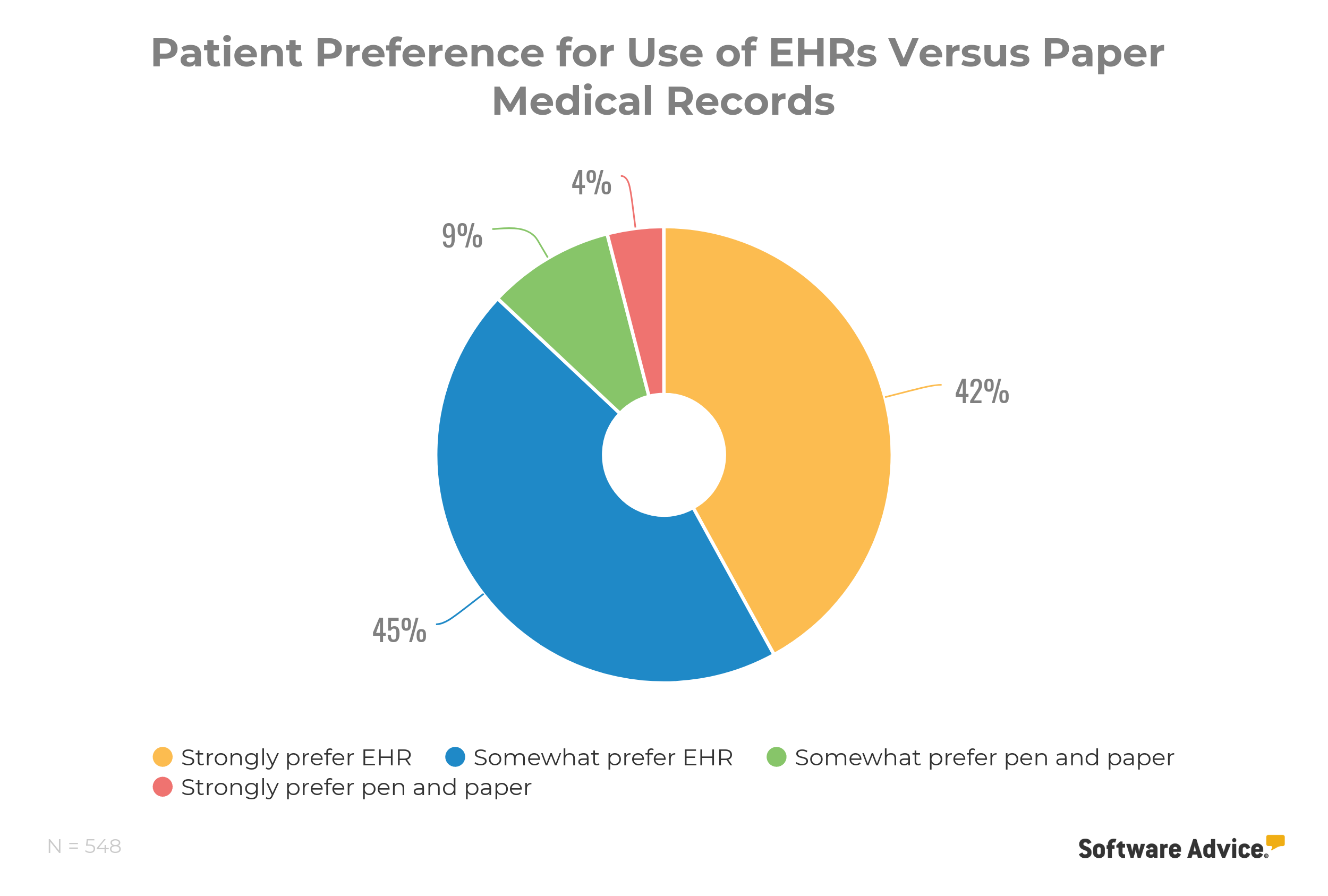
There’s not a whole lot more to say, really. If you’re one of the rare few practices still using paper charts, you’re not doing yourself or your patients any favors.
If you’re holding out on EHRs because you’re afraid they’ll hinder your interactions with patients, fear not. We’ve previously recommended a few workarounds for this when using EHRs, and we used this patient survey to verify how patients would react to them.
Patients are pretty much satisfied with any solution, including bringing in a scribe to take notes during exams and using a digital recorder during the exam to transcribe notes later.
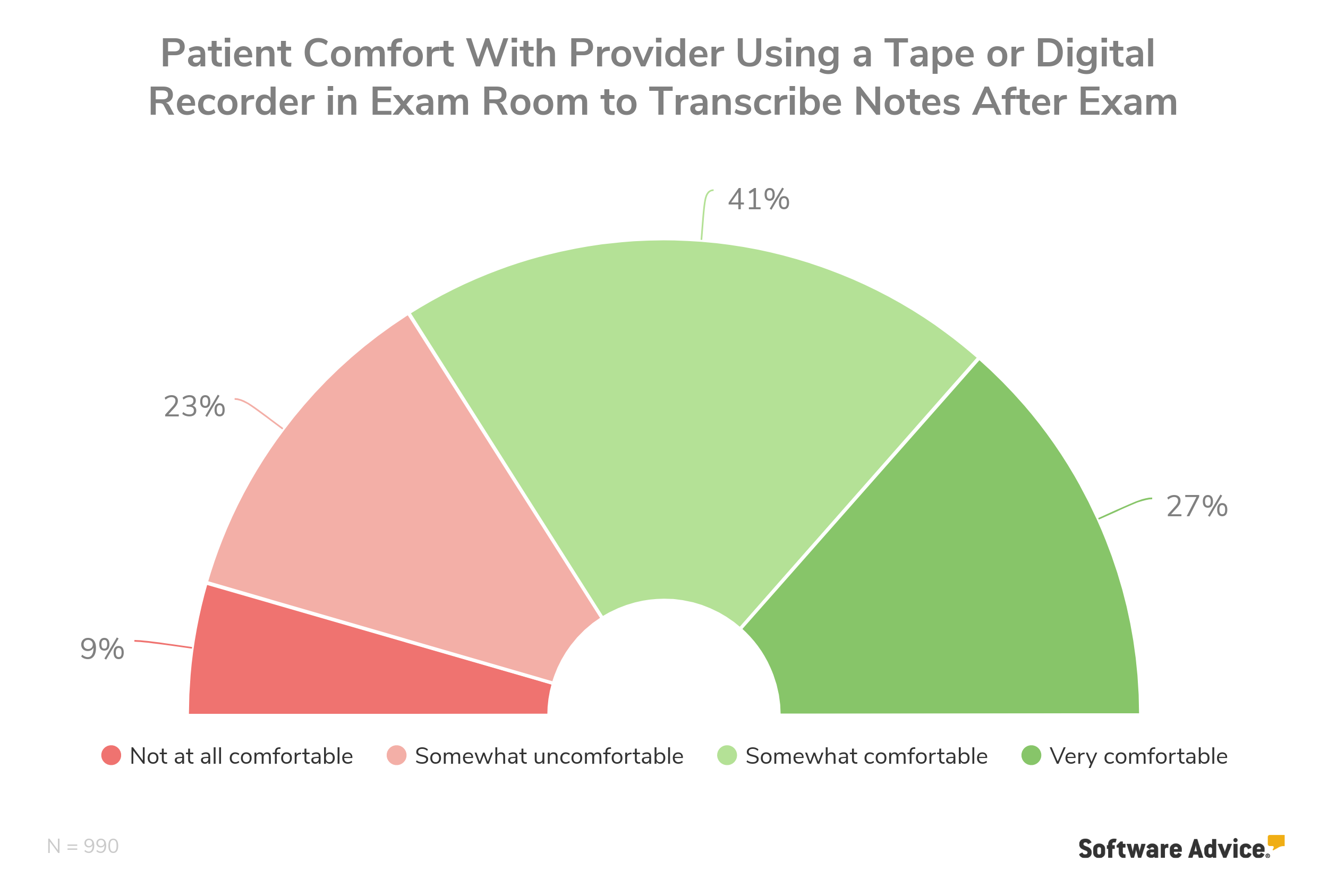
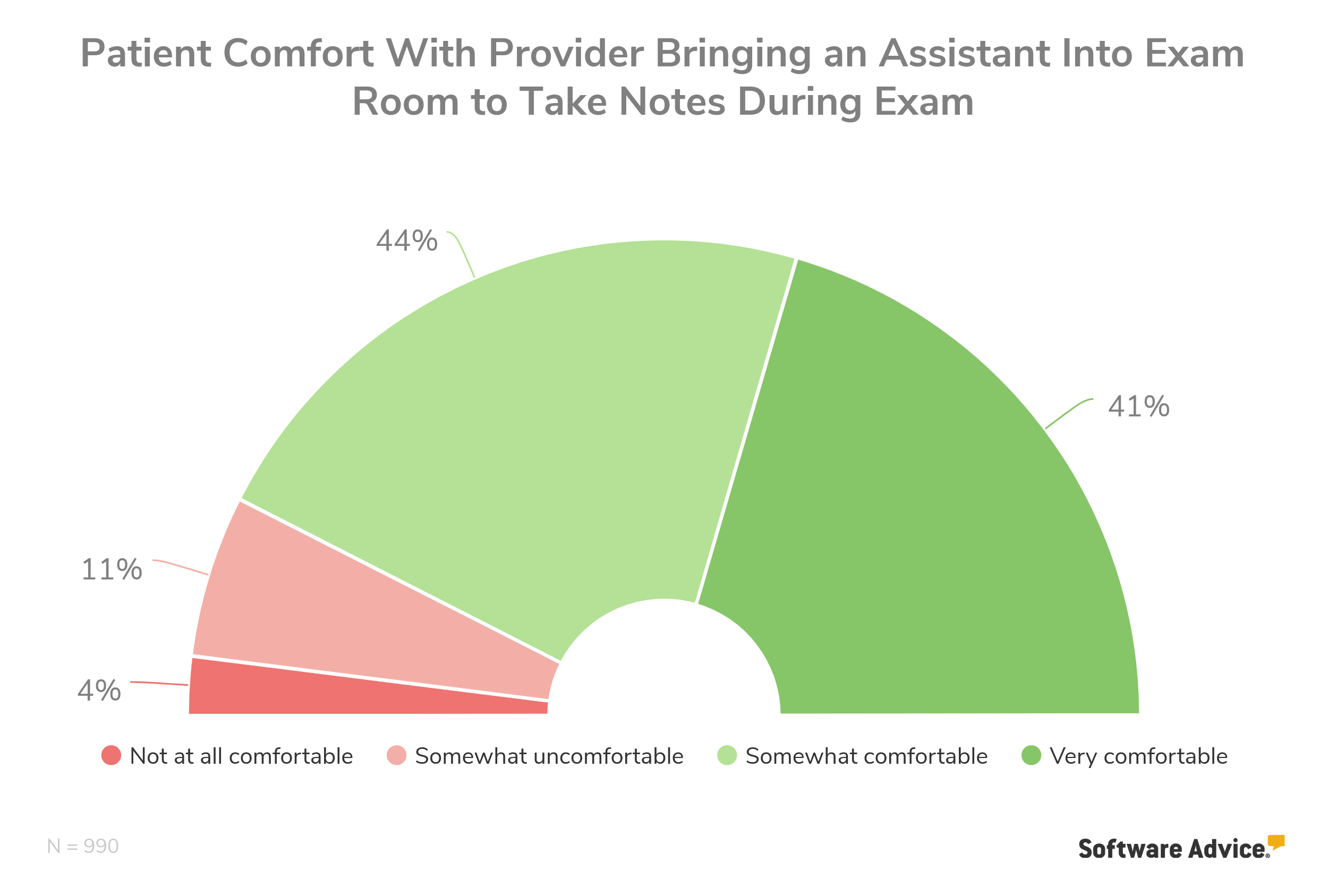
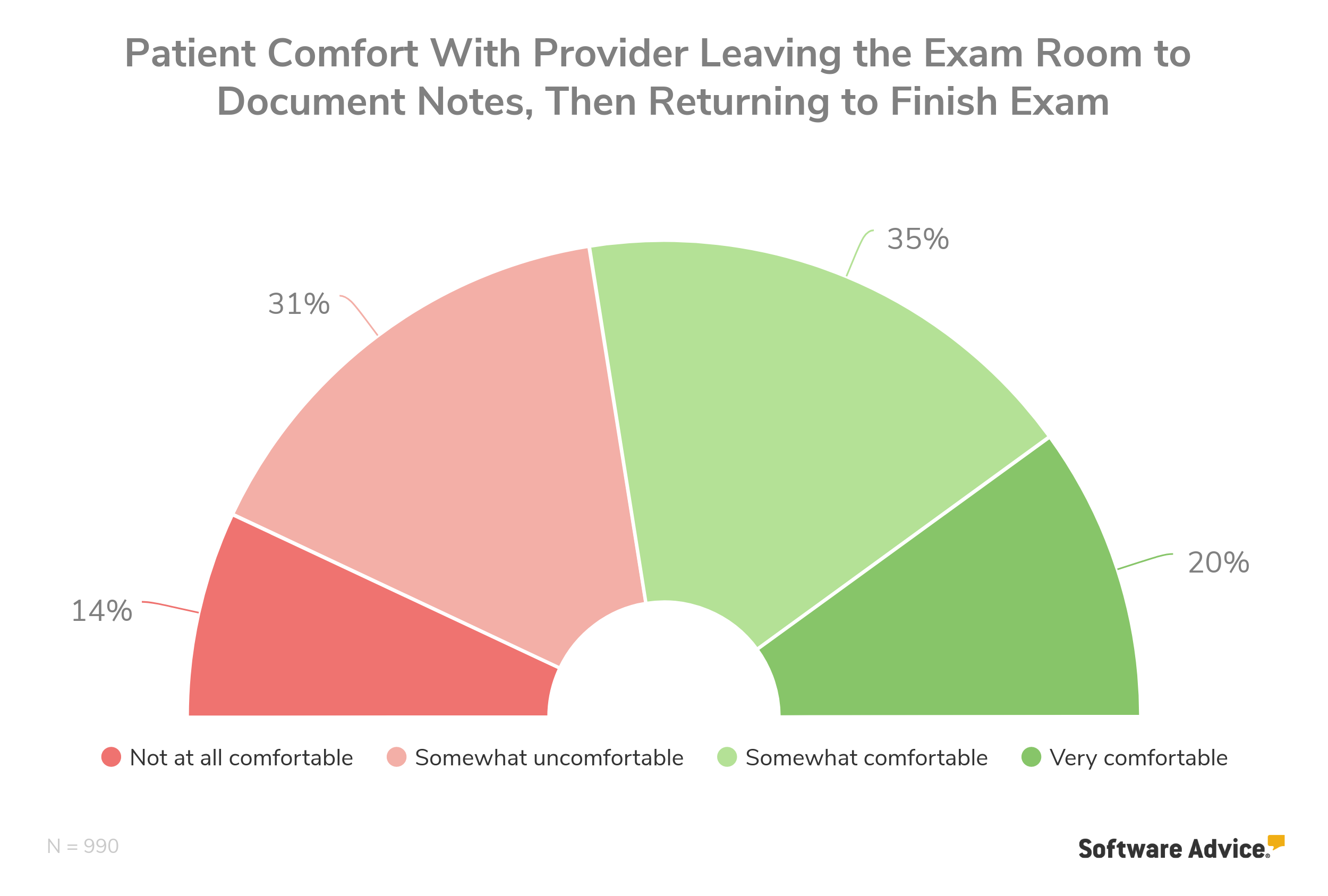
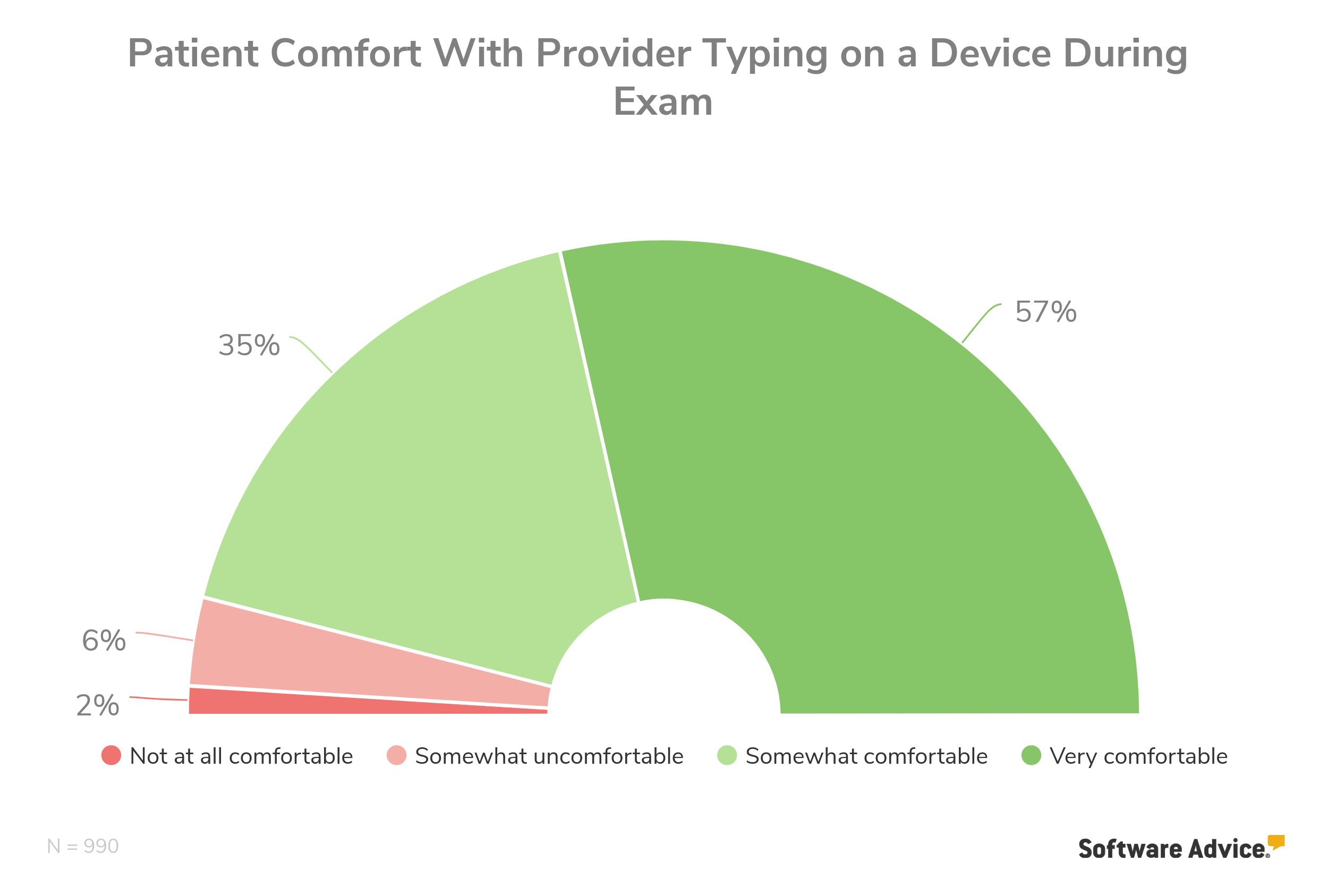
The bottom line: It doesn’t really matter to patients how you choose to integrate EHR use into your daily practice—the most important thing is that you use an electronic system. Patients are coming to expect more and more from their doctors, specifically when it comes to using the most advanced tools and technology to improve the overall patient experience or diagnosis and treatment.
If you’re still taking notes with a pen in the exam room, that’s a clear sign that you aren’t embracing technology within your practice, and it’s going to scare patients away.
So where do you go from here?
I recognize that it’s not feasible to adopt every emerging technology in your practice as it becomes available, and that’s certainly not what I’m advocating. Rather, the takeaway here should be to recognize the changing expectations of patients and start thinking about how you can reasonably meet those expectations. If you’re not using an EHR, that’s step one.
Here are some resources to help you check that box:
Step two is to evaluate EHRs with artificial intelligence features, and that applies to both those who are looking at new EHRs and those who already have an electronic system in place. If you’re in the former group, add AI to your list of required features when evaluating EHR systems.
If you’re in the latter group, it’s worth checking with your current system provider to see if they have AI features already available or if they plan to develop them soon. If the answer to both questions is no, then it’s worth your time to start thinking about a new EHR that does have AI.
Check out these resources for more information about replacing an existing EHR:
Finally, once you’ve got your EHR sorted, start exploring options for telemedicine. Again, plenty of EHRs come with built-in telemedicine features already, so add that to your search criteria if you’re purchasing a new EHR.
Here are a few more articles to help you learn more about telemedicine:
If you’re ready to move past the research stage to start pricing out software options for your practice, our team of medical advisors can help you do just that. They’ll take some time to learn about your practice’s specific requirements and provide a list of software options that meet those needs. Schedule a call or reach out whenever you’re ready.
Methodology
To find the data in this report, we surveyed over 1,000 patients in the United States. We used screening questions to narrow the number of respondents down to 990 with relevant histories and experiences. We worded the questions to ensure that each respondent fully understood their meaning and the topic at hand.
If you have comments or would like to obtain access to any of the charts included in this report, please contact lisa.hedges@gartner.com.
Note: The information contained in this article has been obtained from sources believed to be reliable at the time of publication. The applications selected are examples to show a feature in context and are not intended as endorsements or recommendations.